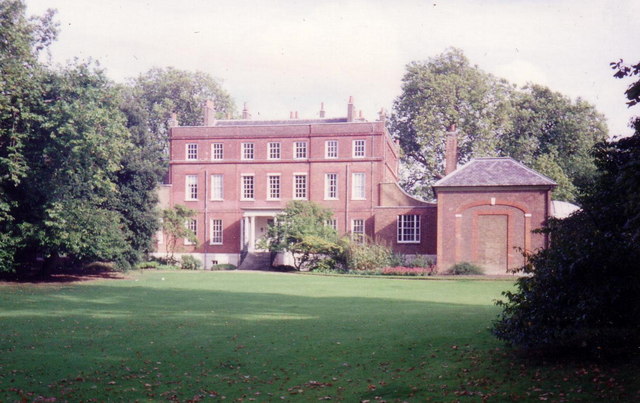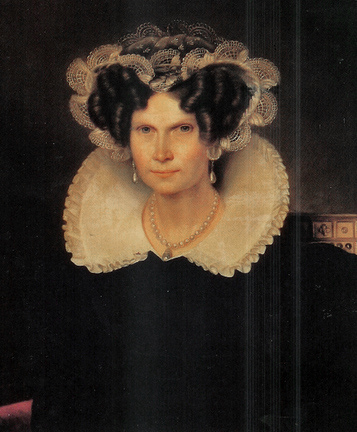© Unofficial Royalty 2023
King Willem III of the Netherlands, Credit – Wikipedia
November 23, 955 – Death of Eadred, King of the English in Frome, Somerset, England; initially buried at the Old Minster in Winchester, England, his remains are now in Winchester Cathedral
Eadred was the son of Edward the Elder, King of the Anglo-Saxons and a grandson of Alfred the Great. In 946, Eadred’s elder brother King Edmund I was murdered while celebrating the feast of St. Augustine of Canterbury at a royal hunting lodge in Pucklechurch, north of Bath, England. Because Edmund’s two sons were very young, he was succeeded by his 23-year-old brother Eadred. Eadred suffered from ill health all his life. He had symptoms similar to the symptoms Alfred the Great, his grandfather also had. Alfred’s contemporary biographer, the Welsh monk Asser, gave a detailed description of his symptoms and modern doctors suspect that he had Crohn’s disease. However, a genetic disease such as porphyria, which Alfred’s descendant King George III may have had, is also possible. Eadred’s ill health is often given as the reason he never married. Towards the end of his life, Eadred’s health deteriorated drastically. He had physical difficulties eating and suffered from some kind of physical disability, possibly paralysis. He delegated most of his royal powers to Dunstan, Abbot of Glastonbury and other counselors. Eadred died at the age of 32.
Unofficial Royalty: Eadred, King of the English
November 23, 1503 – Death of Margaret of York, third wife of Charles I, Duke of Burgundy and sister of King Edward IV of England and King Richard III of England, at Mechelen Palace, in Mechelen, then in the County of Flanders, part of the Burgundian State, now in Belgium; buried in the Church of the Cordeliers, the church of the Grey Friars in Mechelen, Margaret’s tomb was destroyed at the end of the 16th century
Margaret was the daughter of Richard Plantagenet, 3rd Duke of York, the leader of the House of York during the Wars of the Roses until he died in battle, and Cecily Neville, both great-grandchildren of King Edward III of England, and the sister of two Kings of England, Edward IV and Richard III. In 1468, she married Charles I (the Bold), Duke of Burgundy but the couple had no children. Charles was killed at the Battle of Nancy in 1477. Margaret remained an influential matriarch in the family and devoted the last years of her life to the grandchildren and great-grandchildren of her husband. Margaret survived her husband Charles the Bold, Duke of Burgundy by twenty-six years, dying on November 23, 1503, at the age of 57.
Unofficial Royalty: Margaret of York, Duchess of Burgundy
November 23, 1511 – Death of Anne of York, Lady Howard, daughter of King Edward IV of England; buried at Church of St. Michael the Archangel, in Framlingham, Suffolk, England
Anne married Thomas Howard, Earl of Surrey (later 3rd Duke of Norfolk) and they had four children but none survived childhood. Anne’s husband was the uncle of Anne Boleyn and Katherine Howard. After Anne’s death, her widower married Anne Stafford, daughter of Edward Stafford, 3rd Duke of Buckingham.
Unofficial Royalty: Anne of York, Lady Howard
November 23, 1709 – Death of William Bentinck, 1st Earl of Portland, favorite of King William III of England, at Bulstrode Park in Gerrard’s Cross, Buckinghamshire, England; buried at Westminster Abbey in London, England
Bentinck and his first wife Anne Villiers are ancestors of Queen Elizabeth II of the United Kingdom through her mother’s family, specifically through her maternal grandmother, born Cecilia Cavendish-Bentinck. In 1664, fifteen-year-old Bentinck came to the court of fourteen-year-old Willem III, Prince of Orange, the future King William III of England as a page. In 1672, Bentinck became Willem III’s chamberlain. Along with his role at the court where he was an important advisor for Willem III, Bentinck also had a military career. Bentinck played a key role in the planning and execution of the Glorious Revolution of 1688, which resulted in the deposing of Willem’s uncle and father-in-law King James II of England and Willem and his wife and first cousin becoming King William III and Queen Mary II of England. Bentinck went to England with William and Mary and was generously rewarded for his service with titles and estates. He remained William III’s closest advisor until William III’s death. When William III’s wife Mary II died from smallpox, it was Bentinck who carried the nearly insensible William from the room. When William III was on his deathbed, he beckoned Bentinck to his bedside. Bentinck bent down and put his ear to William’s mouth but could only distinguish a few words of William’s incoherent speech. William then took Bentinck’s hand and placed it against his heart. Then William’s head fell back, he closed his eyes, took two or three breaths, and died.
Unofficial Royalty: William Bentinck, 1st Earl of Portland, favorite of King William III of England
November 23, 1729 – Death of Prince Alexander Danilovich Menshikov, favorite of Peter I, Emperor of All Russia, in banishment in Beryozovo, Siberia, Russia
Alexander Danilovich Menshikov was a Russian statesman, a military leader, and a boyhood friend and favorite of Peter I (the Great), Emperor of All Russia. In 1697, Peter I traveled incognito to Western Europe on an 18-month tour called the Grand Embassy and Alexander accompanied him. A number of times, in his various positions and situations, Alexander abused his power even though he was well aware of the principles on which Peter I’s reforms were conducted and was Peter I’s right hand in all his endeavors. Alexander’s corrupt practices frequently brought him to the verge of ruin. After Peter I’s death and the two-year reign of Peter’s wife Catherine I, Peter I’s 11-year-old grandson Peter II came to the throne. Alexander Menshikov took the young emperor into his home and had full control over all his actions. The old nobility, represented by the Dolgorukovs and the Galitzines, united to overthrow Alexander. He was deprived of all his dignities, offices, and wealth, expelled from St. Petersburg, and banished to Siberia with his wife and children. During a smallpox epidemic in Siberia, Alexander died at the age of 56.
Unofficial Royalty: Prince Alexander Danilovich Menshikov, favorite of Peter I, Emperor of All Russia
November 23, 1886 – Birth of Prince Alexander of Battenberg, later Alexander Mountbatten, 1st Marquess of Carisbrooke, grandson of Queen Victoria, at Windsor Castle in Windsor, England
Full name: Alexander Albert Victor
Alexander was the son of Princess Beatrice of the United Kingdom and Prince Henry of Battenberg. When World War I started in August of 1914, Alexander’s regiment was under deployment orders, as was the 60th Rifles, the regiment of his brothers Leopold and Maurice. A little more than two months after the war started, Maurice was killed in action. During World War I, his surname was changed to Mountbatten and he was created 1st Marquess of Carisbrooke. In 1917, he married Lady Irene Denison, daughter of the 3rd Earl of Londesbrough and they had one daughter. After World War I, Alexander began a business career and started work as a clerk in the offices of the bank Lazard Brothers. Alexander also worked for the Metropolitan Housing Corporation which controlled many housing estates for artisans, and Alexander eventually took full charge of the social work connected with the estates. Later he became a director of Lever Brothers and several other companies.
Unofficial Royalty: Alexander Mountbatten, 1st Marquess of Carisbrooke
November 23, 1886 – Death of Marguerite Bellanger, mistress of Emperor Napoleon III, in Villeneuve-sous-Dammartin, France; buried at Montparnasse Cemetery in Paris, France
Using the stage name Marguerite Bellanger, she had a brief career on the Paris stage before she was noticed by Napoleon III, Emperor of the French. She was the mistress of Napoleon III from 1863 until 1870 when he was deposed and exiled. In February 1864, Marguerite gave birth to a son Charles Jules Auguste François Marie Leboeuf, who was in all likelihood, the Emperor’s son. With the Emperor’s exile in 1870, his affair with Marguerite ended. In 1872, she married William Kulbach, Baronet, a Captain in the British Army and the couple lived in England and France.
Unofficial Royalty: Marguerite Bellanger, mistress of Emperor Napoleon III
November 23, 1890 – Death of King Willem III of the Netherlands at Het Loo, near Apeldoorn, the Netherlands; buried at Nieuwe Kerk in Delft, The Netherlands
In 1839, Willem married his first cousin Sophie of Württemberg. Willem and Sophie had three sons, but they all predeceased their father. When his father died in 1849, Willem succeeded as King of the Netherlands. After Sophie died in 1877, Willem was eager to marry again to ensure the future of the House of Orange. In 1879, 61-year-old Willem married 20-year-old Emma of Waldeck-Pyrmont. Emma had a positive influence on Willem and the marriage was extremely happy. The last decade of Willem’s life was definitely the best years of his reign. Willem and Emma had one daughter, Wilhelmina, who succeeded her father. In 1888, King Willem III’s health began to decline. When it became apparent that Willem could no longer reign, Emma was sworn in as Regent. On November 23, 1890, 73-year-old King Willem III died and ten-year-old Wilhelmina became Queen. Emma took over as Regent for her daughter until Wilhelmina’s eighteenth birthday in 1898.
Unofficial Royalty: King Willem III of the Netherlands
November 23, 1965 – Death of Elisabeth of Bavaria, Queen of the Belgians, wife of King Albert I of the Belgians, at Stuyvenberg Castle in Laeken, in Brussels, Belgium; buried at the Royal Crypt in the Church of Our Lady in Laeken, Brussels, Belgium
Elisabeth was the daughter of Karl-Theodor, Duke in Bavaria (a grandson of King Maximilian I Joseph of Bavaria), and his second wife, Infanta Maria Josepha of Portugal (a daughter of King Miguel I of Portugal). She was named after her father’s sister Empress Elisabeth “Sisi” of Austria. In 1900, Elisabeth married the future Albert I, King of the Belgians, and had three children. In 1909, Albert and Elisabeth became King and Queen of the Belgians, following the death of Albert’s uncle, King Leopold II. Elisabeth took on a much more public role than her predecessors, getting involved with many charities and organizations, particularly those in the arts and social welfare. In 1934, Elisabeth’s husband was killed in a mountain climbing accident and was succeeded by their elder son King Leopold III. Elisabeth withdrew from public life, so as not to hinder the efforts of her daughter-in-law, now Queen Astrid. However, in August 1935, Astrid was killed in an automobile accident. Elisabeth returned to public life, doing her best to support her son and his young family, and resuming her position as the first lady of the land. Elisabeth died at the age of 89.
Unofficial Royalty: Elisabeth of Bavaria, Queen of the Belgians
This article is the intellectual property of Unofficial Royalty and is NOT TO BE COPIED, EDITED, OR POSTED IN ANY FORM ON ANOTHER WEBSITE under any circumstances. It is permissible to use a link that directs to Unofficial Royalty.















